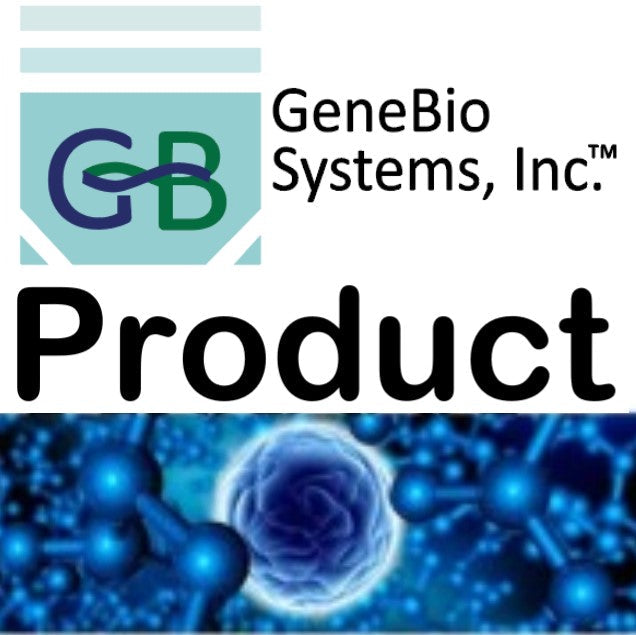Gene Bio Systems
Recombinant Human papillomavirus type 16 Protein E6(E6)
Recombinant Human papillomavirus type 16 Protein E6(E6)
SKU:CSB-EP365854HML
Couldn't load pickup availability
>Several Other Sizes Are Also Available. Please Inquire. Default Size: 200ug
Updated Date: Stock Protein updated on 20170405
Research areas: Epigenetics and Nuclear Signaling
Target / Protein: E6
Biologically active: Not Tested
Expression system: E.coli
Species of origin: Homo sapiens (Human)
Delivery time: 3-7 business days
Uniprot ID: P03126
AA Sequence: MHQKRTAMFQDPQERPRKLPQLCTELQTTIHDIILECVYCKQQLLRREVYDFAFRDLCIVYRDGNPYAVCDKCLKFYSKISEYRHYCYSLYGTTLEQQYNKPLCDLLIRCINCQKPLCPEEKQRHLDKKQRFHNIRGRWTGRCMSCCRSSRTRRETQL
Tag info: N-terminal 6xHis-tagged
Expression Region: 1-158aa
Protein length: Full Length
MW: 23.2 kDa
Alternative Name(s):
Relevance: Plays a major role in the induction and maintenance of cellular transformation. Acts mainly as an oncoprotein by stimulating the destruction of many host cell key regulatory proteins. E6 associates with host E6-AP ubiquitin-protein ligase, and inactivates tumor suppressors TP53 and TP73 by targeting th to the 26S proteasome for degradation. In turn, DNA damage and chromosomal instabilities increase and lead to cell proliferation and cancer development. The complex E6/E6P targets several other substrates to degradation via the proteasome including host NFX1-91, a repressor of human telomerase reverse transcriptase (hTERT). The resulting increased expression of hTERT prevents the shortening of telomere length leading to cell immortalization. Other cellular targets including Bak, Fas-associated death domain-containing protein (FADD) and procaspase 8, are degraded by E6/E6AP causing inhibition of apoptosis. E6 also inhibits immune response by interacting with host IRF3 and TYK2. These interactions prevent IRF3 transcriptional activities and inhibit TYK2-mediated JAK-STAT activation by interferon alpha resulting in inhibition of the interferon signaling pathway.
Reference: Cellular and molecular biological aspects of cervical intraepithelial neoplasia.Kisseljov F., Sakharova O., Kondratjeva T.Int. Rev. Cytol. 271:35-95(2008)
Purity: Greater than 90% as determined by SDS-PAGE.
Storage: The shelf life is related to many factors, storage state, buffer ingredients, storage temperature and the stability of the protein itself. Generally, the shelf life of liquid form is 6 months at -20℃/-80℃. The shelf life of lyophilized form is 12 months at -20℃/-80℃.
Notes: Repeated freezing and thawing is not recommended. Store working aliquots at 4℃ for up to one week.


